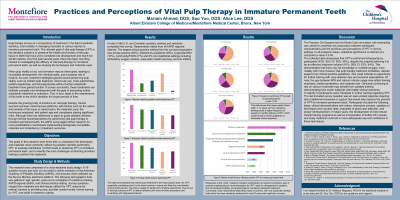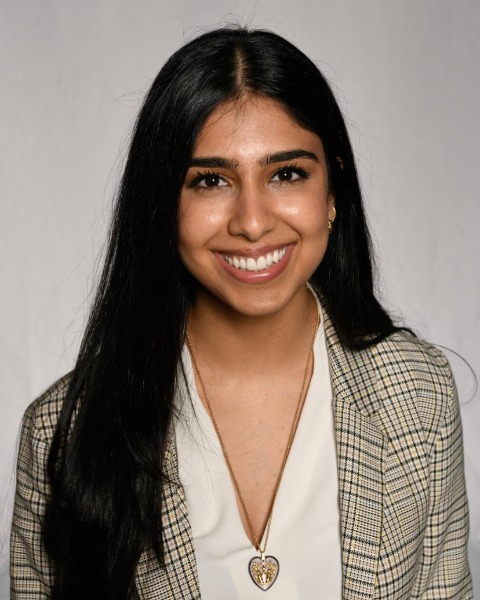Pulp Therapy
Practices and Perceptions of VPT in Immature Permanent Teeth
77 - Practices and Perceptions of Vital Pulp Therapy in Immature Permanent Teeth


Mariam S. Ahmad, DDS
Pediatric Dental Resident
Montefiore Medical Center
Montefiore Medical Center
New York, New York, United States- SY
Soo Yoo, DDS
Pediatric Dental Attending
Montefiore Medical Center
Bronx, New York, United States - AL
Alice Lee, DDS
Associate Director/Assistant Professor
Montefiore Medical Center
Bronx, New York, United States
Presenting Author(s)
Research Mentor(s)
Program Director(s)
Purpose: The purpose of this study is to evaluate the practices and perceptions of pediatric dentists on vital pulp therapy in immature permanent teeth. The goals of this research are three-fold: to understand the techniques and materials most commonly used by pediatric dentists performing VPT, to evaluate practitioner comfort levels in rendering VPT on immature permanent teeth, and to identify the main challenges confronting providers looking to perform this treatment.
Methods: This research comprises a cross-sectional study design. An invitation to participate in an online survey regarding vital pulp therapy in immature permanent teeth was sent via email to active AAPD members and answers were collected via the Survey Monkey electronic platform. The study population includes practicing pediatric dentists and current pediatric dental residents.
Results: Upon compilation of data from completed surveys, descriptive statistical analysis was completed. Indirect pulp treatment was found to be the most popular option utilized by pediatric dentists, with a drop in usage for both partial and complete pulpotomies. MTA was the most commonly used medicament, followed by glass ionomer. The most significant barriers to care included patient cooperation and lack of insurance coverage and cost of treatment.
Conclusions: The results of this study showed that VPT is performed infrequently, despite the majority of respondents believing in its ability to serve as an effective long-term solution for the treatment of immature permanent teeth. Many participants were interested in further training regarding VPT, indicating an opportunity for a variety of teaching modalities with case selection tips and outcome expectations.
Identify Supporting Agency and Grant Number:

.jpg)